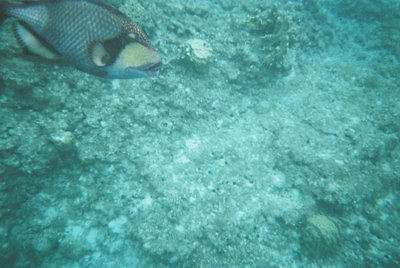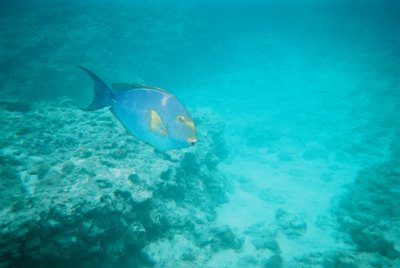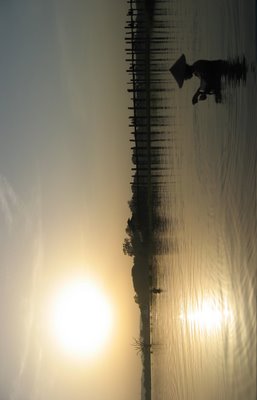Hiroshima Traces
What started as a photographic archive of my ten-month stint working in Hiroshima, traveling Asia, and living as a gaijin in Japan remains the blog of an avid traveler and aspiring sociologist.
Wednesday, March 21, 2007
Friday, December 29, 2006
Off to South America
On January 3 I will arrive in Lima, Peru after a 4 am departure from DC and a dreadful 5 hour layover in San Salvador. Leah and I will be heading southward across the Andes into Bolivia, hiking the four-day Inca Trail to Machu Pichu along the way. After crossing Lake Titicaca, we'll head through La Paz down the Andes as far south as the salt flats of Salar de Uyuni. From there we fly north to Quito, Ecuador, venture south to Guayaquil, fly to the Galapagos and back, and finish up with a final stretch through the Andes back to Lima. I'll return on March 5.

Friday, November 17, 2006
Myanmar

According to an article in today's NY Times,"Myanmar’s per capita income is calculated at $175 a year, far below neighboring Bangladesh," setting this figure at roughly a third of the per capita incomes of either Sudan or Haiti. From the same piece:
The government’s budget for its AIDS program in 2004 was $22,000, according to a recent health survey by John Hopkins University Medical School.
The junta leader, Gen. Than Shwe, 73, whose early military training was in psychological warfare, was described by many here as a master manipulator of his minions. He insisted, apparently out of fear of a coup, that the capital be moved this year from Yangon, formerly Rangoon, to a new site in the jungle, Naypyidaw.
The move, costing millions of scarce dollars, was in step with the general’s belief that he marched in the footsteps of the old Burmese kings — the name of the new capital means “Royal City.” Then, as now, there was a fierce line between the rulers and the ruled.
For the first time, health workers said they were discovering severe malnutrition among children in urban centers, a true anomaly in a lush country that was once the world’s biggest exporter of rice.
An Intha boatman rowing with his leg, Lake Inle:

A monk at the floating Jumping Cat Monastery teaches cats to jump through a hoop, Lake Inle:

Novice monks studying at the country's third largest monastery, Bago:

The Golden Rock, a mansion-sized precariously perched gilded boulder at the very edge of a steep cliff, Kyatiyo:

Next to a gargantuan reclining buddha, Bagan:

Novice monks play soccer in an Intha village on the shore, Lake Inle:

The Mustache Brothers, Mandalay:

View of 4000 millenium-old temples, Bagan:

Wednesday, October 18, 2006
Bomblets, bomblets everywhere
 After a friend sent me a picture a few weeks ago of an Israeli cluster bomblet left in Lebanon, I realized that we are rarely presented with contemporary artillery photographs by the media. All of the following bombs and mines were produced in the US and were collected by a team led by Aki Ra, a twice-conscripted Khmer Rouge soldier who served with the Vietnamese occupation between these two stints. In the early 1990s he returned to northwestern Cambodia to work as a mine-clearer for the UN. He continued this work after the UN withdrew from Cambodia, and, having stockpiled an impressive collection of shells, opened the Cambodia Land Mine Museum after the conclusion of the civil war.
After a friend sent me a picture a few weeks ago of an Israeli cluster bomblet left in Lebanon, I realized that we are rarely presented with contemporary artillery photographs by the media. All of the following bombs and mines were produced in the US and were collected by a team led by Aki Ra, a twice-conscripted Khmer Rouge soldier who served with the Vietnamese occupation between these two stints. In the early 1990s he returned to northwestern Cambodia to work as a mine-clearer for the UN. He continued this work after the UN withdrew from Cambodia, and, having stockpiled an impressive collection of shells, opened the Cambodia Land Mine Museum after the conclusion of the civil war.When I met Aki Ra in Siem Reap, he admitted to me that he believes he cleared some of the very mines he laid during the 1980s for both the Vietnamese/PRK and Khmer Rouge forces.
These MK-82 bombs (note "USA" painted on right-most one) were dropped from US planes, as were the cluster bomblets pictured above, originally encased by a much larger shell. The anti-personnel mines (the ones that look like mini-bombs) and the anti-tank mines (the pancake mines under the house behind the MK-82s) were supplied by the US to the Khmer Rouge and laid in Northwestern Cambodia in the mid-1980s. All were cleared by hand.


Tuesday, October 17, 2006
Tuesday, May 30, 2006
Sunday, May 21, 2006
Chiiori
Chiiori is an Edo era farmhouse located in the Iya Valley of east central Shikoku. It was purchased by the travel writer Alex Kerr in the 70s, though he's apparently no longer affiliated with the project. Kerr's writing tends to be condescending and self-congratulatory expatriate ranting (a post on an Americans-in-Japan expat website put it perfectly, though I actually don't think this is a joke: "I would like to leave Alex Kerr alone so that he (and Ian Buruma) can have the peace and quiet to pen more books."), but all hard feelings aside, the house was incredible. After taking two trains and a bus through the mountains near Oboke, a small pickup truck was waiting for me on the side of the road. I hopped in the back and was ferried up the mountainside to Chiiori. The house is in fact so remote (as Kerr's book Lost Japan reiterates) that it was featured in TIME and appears in the current issue of the Atlantic Monthly. I'm not sure why I'm being such a cynic, as the place itself was truly breathtaking and the volunteer staff were incredible individuals. To be fair, I'll give Mr. Kerr the last word. From Dogs and Demons:
Occassionally one sees foreigners having an impact in certain out-of-the-way niches in Japan, such as Iya Valley in Shikoku, where the Chiiori Project, a volunteer movement centered on Mason Florence's and my old farmhouse, is drawing numerous foreign travelers and exchange teachers. The sight of all these foreigners trekking to such a remote place is reawakening local interest in reviving Iya's natural beauty.



Iya Valley:









Wednesday, May 17, 2006
Cobra Gold 2006
With so many exercises happening between so many countries at one time, everyone is bound to receive great training to take back home.
 Unfortunately, the above quote is not an excerpt from the Olympic Committee's homepage, but rather how the US Pacific Command website describes the commencement of the 25th annual Cobra Gold. What began in 1981 as joint US-Thai war games has turned into a full-blown Asian NATO, with this year's participants also including Singapore, Japan, and for the first time Indonesia. While this is Japan's second year participating, it is the first time the Self Defense Forces will actively take part in Combined Field Training Exercises. Despite an obvious violation of Article 9 of the country's Constitution, Japanese participation has been exceptionally euphemized, limiting activities to "humanitarian/civic assistance projects" (as opposed to the other countries' "peace support operations field training exercise in support of the United Nations Global Peace Operations Initiative (GPOI)").
Unfortunately, the above quote is not an excerpt from the Olympic Committee's homepage, but rather how the US Pacific Command website describes the commencement of the 25th annual Cobra Gold. What began in 1981 as joint US-Thai war games has turned into a full-blown Asian NATO, with this year's participants also including Singapore, Japan, and for the first time Indonesia. While this is Japan's second year participating, it is the first time the Self Defense Forces will actively take part in Combined Field Training Exercises. Despite an obvious violation of Article 9 of the country's Constitution, Japanese participation has been exceptionally euphemized, limiting activities to "humanitarian/civic assistance projects" (as opposed to the other countries' "peace support operations field training exercise in support of the United Nations Global Peace Operations Initiative (GPOI)").
Japanese rearmament is an explicit goal of the United States-Japan Security Consultative Committee Document Joint Statement signed on May 1 of this year by Rumsfeld, Rice, Minister of Foreign Affairs Aso Taro, and Minister of State for Defense Nukaga Fukushiro. (Rice and Taro pictured together, right.) Contained in the Statement:
The Ministers stressed the imperative of strengthening and improving the effectiveness of bilateral security and defense cooperation in such areas as ballistic missile defense, bilateral contingency planning, information sharing and intelligence cooperation, and international peace cooperation activities, as well as the importance of improving interoperability of Japan’s Self-Defense Forces and U.S. forces.
And there you have it: "interoperability" of Japan's SDF and US forces. As the new Japanese military chief of staff Massaki Hajime told Reuters:
Integrating the forces has been our dream since the Self-Defense Forces were established about 50 years ago.
Adopting the new joint staff system will also make it easier to coordinate with the United States, which has a similar structure.
Tuesday, May 16, 2006
Koizumi and the US military occupation of Okinawa
As part of the realignment package Japan and the United States finalized earlier this month, a new airfield will be built on the Nago coastline for relocation of the U.S. Marine Corps Air Station Futenma from downtown Ginowan, also in Okinawa, and Iwakuni will host a carrier air wing to be moved from Atsugi, Kanagawa Prefecture.
 "The Nago coastline" plan--blatantly euphemized in the article--will entail destruction of the Henoko reef, habitat to three species of endangered sea turtles and the rare dugong, of which only 25-50 are believed to exist (pictured right). The Henoko agreement was negotiated with the US on February 6 of last year, prompting 22 boats of protesters to take to the Bay (pictured above). The continued occupation of Okinawa and threatening of the Henoko Reef has caused nationwide outcry, resulting in the formation of groups ranging from informal networks to organized campaigns, including the Save Life Society. No Base Henoko Tokyo, and the Futenma-Henoko Action Network, as well as a massive coalition of hundreds of US environmental and legal groups. According to the Progressive Portal:
"The Nago coastline" plan--blatantly euphemized in the article--will entail destruction of the Henoko reef, habitat to three species of endangered sea turtles and the rare dugong, of which only 25-50 are believed to exist (pictured right). The Henoko agreement was negotiated with the US on February 6 of last year, prompting 22 boats of protesters to take to the Bay (pictured above). The continued occupation of Okinawa and threatening of the Henoko Reef has caused nationwide outcry, resulting in the formation of groups ranging from informal networks to organized campaigns, including the Save Life Society. No Base Henoko Tokyo, and the Futenma-Henoko Action Network, as well as a massive coalition of hundreds of US environmental and legal groups. According to the Progressive Portal:Before the drilling platforms arrived, anti-military and pro-environment activists, some as old as 90, sat in at government offices for 10 days, occupied the beachfront for more than 250 days, and held a 20-day hunger strike. When the action moved offshore, so did the opposition. The scrupulously nonviolent activists, some of whom had not previously learned to swim, became skilled rowers and divers. Former Naha City Council member Suzuyo Takazato tells of 70-year-olds in wet suits diving into the waters to disrupt the attempts to bore holes in the sea floor. At the World Social Forum in Brazil and on a subsequent visit to the U.S. this month, Ms. Takazato displayed pictures of women and elders blocking drilling workers in rowboats and occupying the drilling platforms. Rowing out to the platforms at 6:30 every morning, day after day, week after week, the resisters have managed to prevent all drilling to date. Workers have not yet been able to install a single drilling engine on any of the platforms.You can send an email to Japanese officials protesting these attacks on endangered species' habitats as well as the prolonged US military occupation of Okinawa here, thanks to a form letter created by Progressive Portal.
Relocation of Henoko residents has not been ruled out. The same Japan Times article describes how the tax-funded Japan Bank for International Cooperation will pay for the tentative relocation of a number of US military bases from Okinawa to American soil in Guam. The Asahi Shinbun reports that Japanese taxpayers will in fact foot 700 billion yen--or 59 percent--of the US military's relocation costs.
 How did Koizumi respond to the residents of Okinawa, Yamaguchi, and Kanagawa prefectures who have repeatedly expressed--in both mass demonstrations and official public referenda for over a decade--their disgust with LDP complicity in the US military occupation of Japan?
How did Koizumi respond to the residents of Okinawa, Yamaguchi, and Kanagawa prefectures who have repeatedly expressed--in both mass demonstrations and official public referenda for over a decade--their disgust with LDP complicity in the US military occupation of Japan?Prime Minister Junichiro Koizumi intends to leave it to the next session of the Diet to deliberate the bills related to Japan's cost burden. Koizumi has kept stressing that his priority is to keep his promise to Washington. Yet, he decided to let his successor explain the situation to the public.
Thursday, May 11, 2006
Okinawa

I spent Golden Week island hopping around Okinawa. The following five posts include my trips to Zamami-jima, Naha, Ishigaki-jima, Taketomi-jima, and Iriomote-jima. All photos can be enlarged by clicking on the image.

Zamami-jima
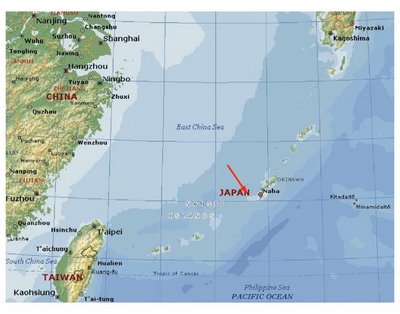
Located in the Kerama archipelago about 30 km west of Naha, Zamami-jima has but one small village with a population of about 600. Famous for its winter whale watching and summer diving opportunities, I stepped off the ferry from Naha when I spotted a whale statue and a giant "Welcome to Zamami Isl." sign.

Apparently, "Isl." was an abbreviation for "islands" plural, and I was not on Zamami Island, but instead on nearby Aka-jima in the Zamami Islands, a sub-archipelago of the Kerama Islands. I walked into the only place to stay on the island and asked where my guesthouse was located. They had no idea, which I found bizarre on an island with a population of well under a thousand. The innkeeper's daughter did know of my minshuku, tossed me in her van, and floored it back to the dock. We were just in time to see the ferry pull out...one of three ferries daily. Luckily I only had to wait another couple of hours for the next "ferry" (a three-seater, pictured below) to Zamami-jima.
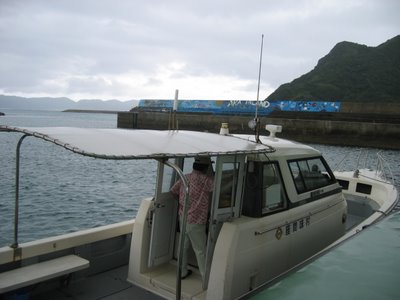
The Kerama Islands (and Zamami-jima in particular) were occupied by the US Navy navy during World War II, from which they could attack the main island of Okinawa-Honto. The great Japanese historian Ienaga Saburo describes this tragic episode:
Garrison commander Akamatsu Yoshitsugu of Tokashikijima, Kerama archipelago, Okinawa, ordered local inhabitants to turn over all food supplies to the army and commit suicide before U.S. troops landed. The obedient islanders, 329 altogether, killed each other at the Onna River with razors, hatchets, and sickles. U.S. forces occupied nearby Iejima and used some of the local people to take surrender appeals to Akamatsu's unit on Tokashikijima. Akamatsu's men klled the emissaries and many members of the island's self-defense unit for allegedly violating orders. On another Okinawan island, Zamami, unit commander Umezawa ordered the island's elderly and children to commit suicide in front of the memorial to local war dead from the Sino and Russo-Japanese Wars. The remaining islanders were forbidden to pick any potatoes or vegetables. Thirty persons who violated the order were starved or shot.
A memorial was erected by the residents of Zamami Village on Aka-jima in honor of the 200,000 who perished in the Battle of Okinawa:

My birthday dinner at a minshuku in Zamami Village:

This minshuku was built by the innkeeper's (pictured above, left) great grandparents more than 120 years ago. The structure miraculously survived the war, though some of the floorboards only barely survived the Levenson stomp:


A shiisa perched on the roof:

Furuzamami Beach:

